"Is your mobile app truly meeting the needs of your users?" This is a question that every app developer and designer should regularly ask themselves. The key to a successful mobile app isn't guessing what users want; it's using data from UX analytics. These insights can help create an app that attracts and keeps users, rather than one that doesn't succeed.
UX analytics specifically for mobile apps goes beyond mere number-crunching. It delves into how users interact with your app, what they find engaging, and what aspects might be causing frustration. By gathering and analyzing this data, developers and designers can make informed decisions to enhance the user experience.
In the next parts, we'll look at how important UX data analytics is for mobile apps. We'll see how it can improve your app and make it more successful. No matter your experience level, learning about UX analytics is key to making an app that people enjoy and use regularly.
In the world of mobile apps, remember, UX analytics is more than just a tool. It's essential for staying competitive and providing great user experiences.
UX analytics specifically for mobile apps goes beyond mere number-crunching. It delves into how users interact with your app, what they find engaging, and what aspects might be causing frustration. By gathering and analyzing this data, developers and designers can make informed decisions to enhance the user experience.
In the next parts, we'll look at how important UX data analytics is for mobile apps. We'll see how it can improve your app and make it more successful. No matter your experience level, learning about UX analytics is key to making an app that people enjoy and use regularly.
In the world of mobile apps, remember, UX analytics is more than just a tool. It's essential for staying competitive and providing great user experiences.

Understanding user experience data is crucial in the world of mobile app development. It's not just about how your app looks, but how users interact with it. This is where user experience data analytics comes in. By analyzing UX data, you can see exactly where your app meets user needs and where it falls short.
Think of UX data as a roadmap. It guides you through the user's journey within your app, showing you the points where they are most engaged and the areas where they face issues. This insight is invaluable. It helps you make targeted improvements, enhancing the overall user experience.
In a nutshell, user experience data analytics is not just a set of numbers. It's a deep dive into user behavior, preferences, and pain points. By focusing on this data, you can make an app that's not just visually appealing, but also easy and enjoyable to use. In the mobile app market, a good user experience can make or break an app's success.
Think of UX data as a roadmap. It guides you through the user's journey within your app, showing you the points where they are most engaged and the areas where they face issues. This insight is invaluable. It helps you make targeted improvements, enhancing the overall user experience.
In a nutshell, user experience data analytics is not just a set of numbers. It's a deep dive into user behavior, preferences, and pain points. By focusing on this data, you can make an app that's not just visually appealing, but also easy and enjoyable to use. In the mobile app market, a good user experience can make or break an app's success.
UX analytics tools are a game changer to improving mobile apps. These tools help you understand how users interact with your app. They track things like where users click, how long they stay on a page, and what they do on your app. This information is crucial for making your app better.
There are many different UX analytics tools out there. Some focus on specific aspects, like user behavior or app performance. Others give a more general view. What's great about these tools is that they can fit different needs and budgets.
Using UX analytics software, you can see what's working in your app and what's not. This helps you make smart changes that can lead to more users and better user satisfaction.
Remember - keeping users happy is key. That's why UX analytics tools are so valuable. They give you the insight you need to make your app the best it can be.
There are many different UX analytics tools out there. Some focus on specific aspects, like user behavior or app performance. Others give a more general view. What's great about these tools is that they can fit different needs and budgets.
Using UX analytics software, you can see what's working in your app and what's not. This helps you make smart changes that can lead to more users and better user satisfaction.
Remember - keeping users happy is key. That's why UX analytics tools are so valuable. They give you the insight you need to make your app the best it can be.
When it comes to mobile apps, certain UX analytics metrics are particularly important. These metrics help bridge the gap between analytics and user experience, providing a clearer picture of how users interact with your app. Understanding and monitoring these metrics can significantly improve the effectiveness of your UI UX data analytics efforts.
By looking at these metrics, you can learn how users use your app and find areas to make it better. This information is crucial in today's app market, as a positive user experience can greatly affect your app's success.
- User Engagement: This metric tracks how actively users interact with your app. It includes data on session length, frequency of use, and the features most commonly used.
- User Retention: This shows how many users return to your app after their first visit. High retention rates often indicate a positive user experience.
- App Performance Metrics: These include load times and crash reports. Fast, smooth performance is key to a positive user experience.
- Conversion Rates: This metric is about how well your app turns visitors into active users or customers. It's crucial for understanding the effectiveness of your app's design and functionality.
- User Feedback: Surveys, ratings, and reviews give direct insights into user satisfaction and areas needing improvement.
By looking at these metrics, you can learn how users use your app and find areas to make it better. This information is crucial in today's app market, as a positive user experience can greatly affect your app's success.
Understanding how users interact with a mobile app is key. This is where UI analytics play a crucial role. By using UI analytics, developers and designers can gain insights into user behavior and improve the overall user experience.
By focusing on these aspects, UI analytics provide valuable information. This information helps improve user experience, making the app more user-friendly and successful.
- Tracking User Navigation: UI analytics tools can show how users move through your app. This includes the screens they visit most and the paths they take.
- Analyzing Touch Gestures: Understanding how users use touch gestures like swipes and taps can help improve the app's interface.
- Identifying Drop-off Points: UI analytics help identify where users stop using the app. This can highlight areas for improvement.
- Evaluating Response Times: Quick response times are crucial for a good user experience. UI analytics can help monitor and improve these times.
- Custom Event Tracking: Custom events, like button taps or feature usage, give specific insights into how users interact with your app.
By focusing on these aspects, UI analytics provide valuable information. This information helps improve user experience, making the app more user-friendly and successful.
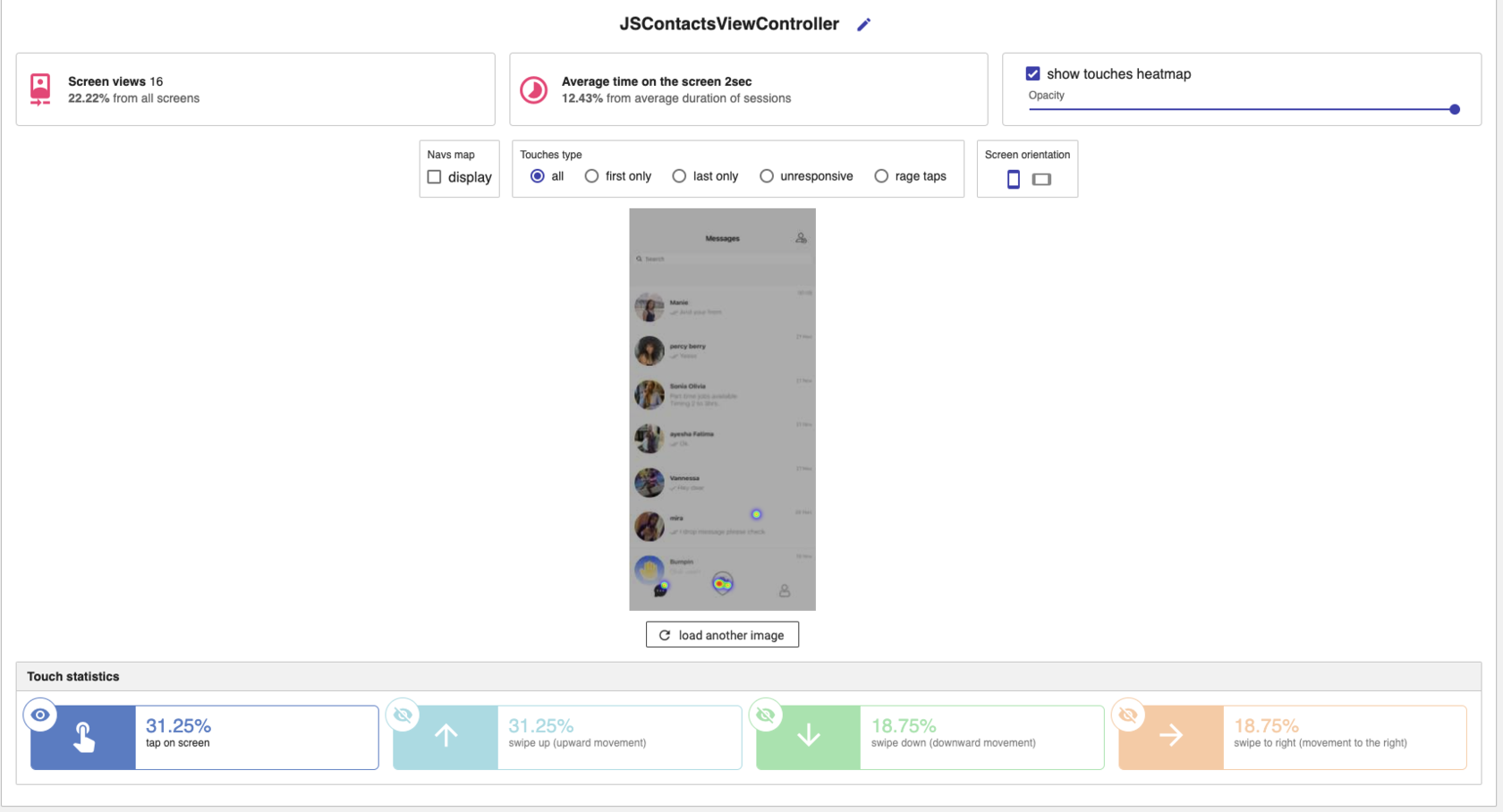
To make a mobile app truly user-friendly, it's important to analyze advanced UX data techniques. These techniques help in understanding the deeper aspects of user behavior and preferences. They are vital for integrating UX design and data analytics effectively.
Use advanced techniques in UX data analysis to better understand how users interact with your app. This leads to more informed decisions in UX design, enhancing the overall user experience of your mobile app.
- Heatmaps: Heatmaps show where users are clicking most on your app. They can highlight popular features or areas where users might be having trouble.
- Session Replays: By replaying user sessions, you can see exactly how users navigate your app. This helps in identifying any usability issues.
- A/B Testing: This involves testing two versions of a feature to see which one performs better. It's a powerful way to make data-driven design decisions.
- User Segmentation: By segmenting users based on behavior or demographics, you can tailor your app to suit different user groups.
- Predictive Analytics: Using historical data, predictive analytics can forecast future user behavior. This is useful for planning new features or updates.
Use advanced techniques in UX data analysis to better understand how users interact with your app. This leads to more informed decisions in UX design, enhancing the overall user experience of your mobile app.
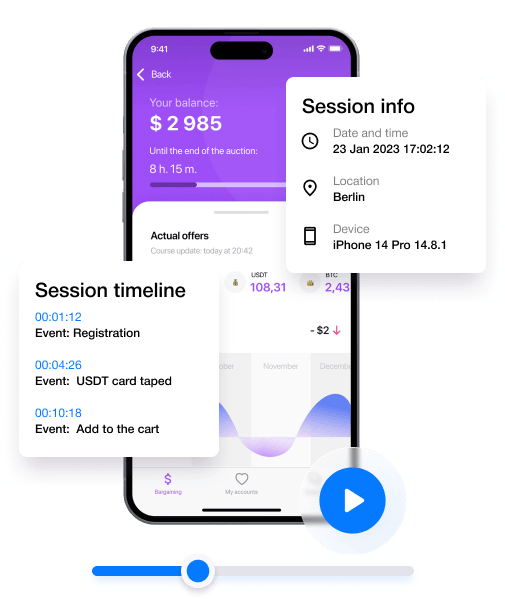
Selecting the right UX analytics tools is crucial for effectively analyzing and enhancing your mobile app's user experience. Consider the options and choose the tool that best fits your app's needs. Here are some key factors to keep in mind:
By carefully evaluating these aspects, you can choose UX analytics tools and software that best fit your mobile app’s needs. This decision is a step towards gaining deeper insights into user behavior and continuously improving your app's user experience.
- Look for tools with the features you want, like heatmaps, user session recordings, or real-time analytics.
- Ease of Use: The tool should be user-friendly, allowing you and your team to easily analyze data without needing extensive technical knowledge.
- Integration: Make sure the tool can easily work with your app's current setup and other analytics tools you use.
- Scalability: The tool should be able to handle your app's growth and adapt to changing requirements over time.
- Cost: Consider the pricing and whether it fits within your budget. Remember, the most expensive tool is not always the best for your needs.
- Support and Resources: Good customer support and access to learning resources can be invaluable, especially when you're starting out.
By carefully evaluating these aspects, you can choose UX analytics tools and software that best fit your mobile app’s needs. This decision is a step towards gaining deeper insights into user behavior and continuously improving your app's user experience.
In mobile app development, using the right UX analytics tools is important for understanding and improving user experiences. Here are some of the top tools, including UserX, that offer comprehensive features for UX data analytics:
UserX

UserX provides an insightful look into user behavior with features like session replays, heatmaps, and real-time analytics. It's especially useful for identifying usability issues and improving user journeys within your app.
Google Analytics for Mobile
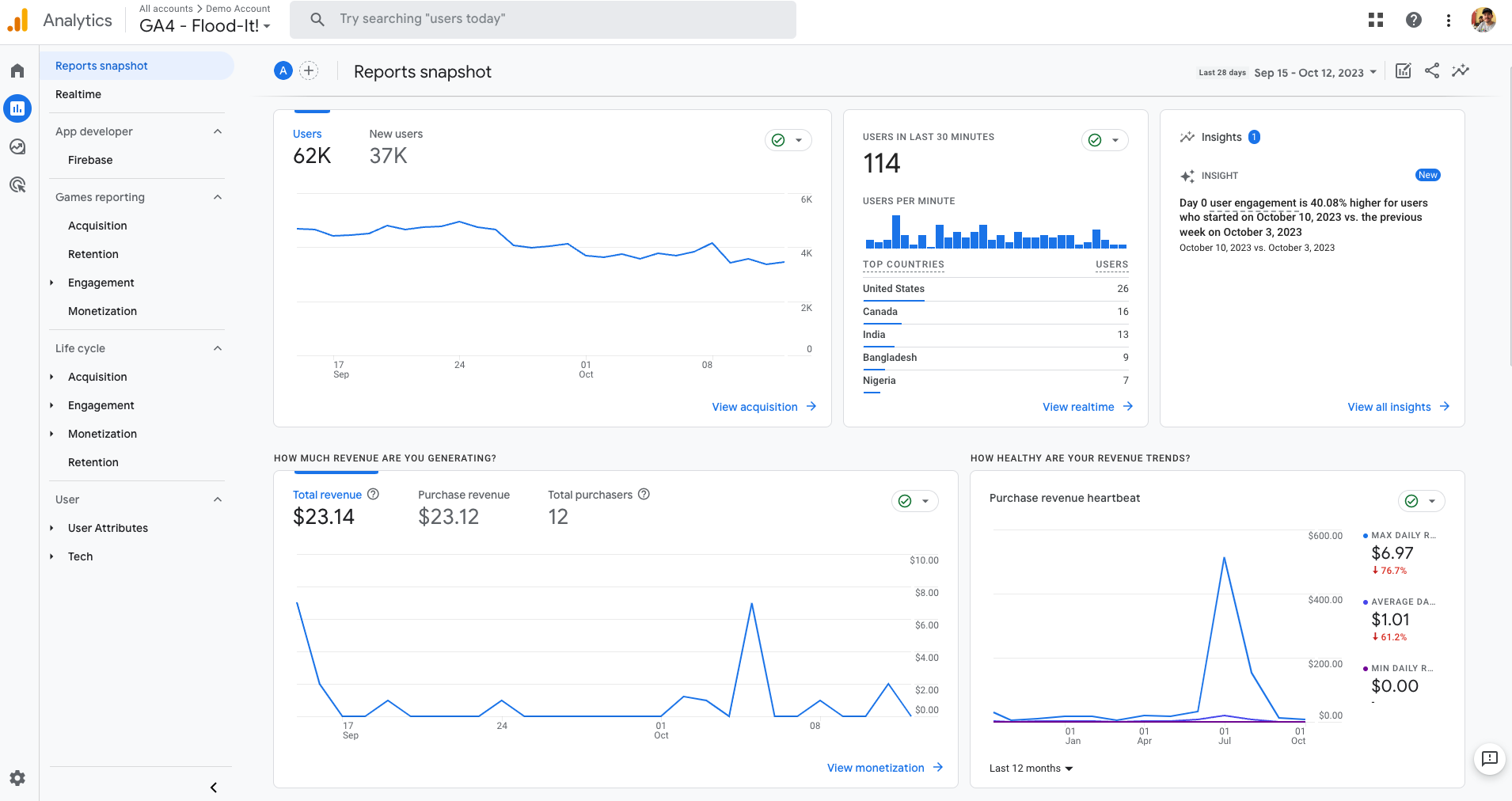
A popular choice, offering detailed insights into app usage, user engagement, and demographic data.
Mixpanel

Mixpanel is known for tracking user events and analyzing how users interact with your app in real-time.
Data.ai

Provides market data, analytics, and insights, which are crucial for competitive analysis and UX optimization.
Flurry Analytics
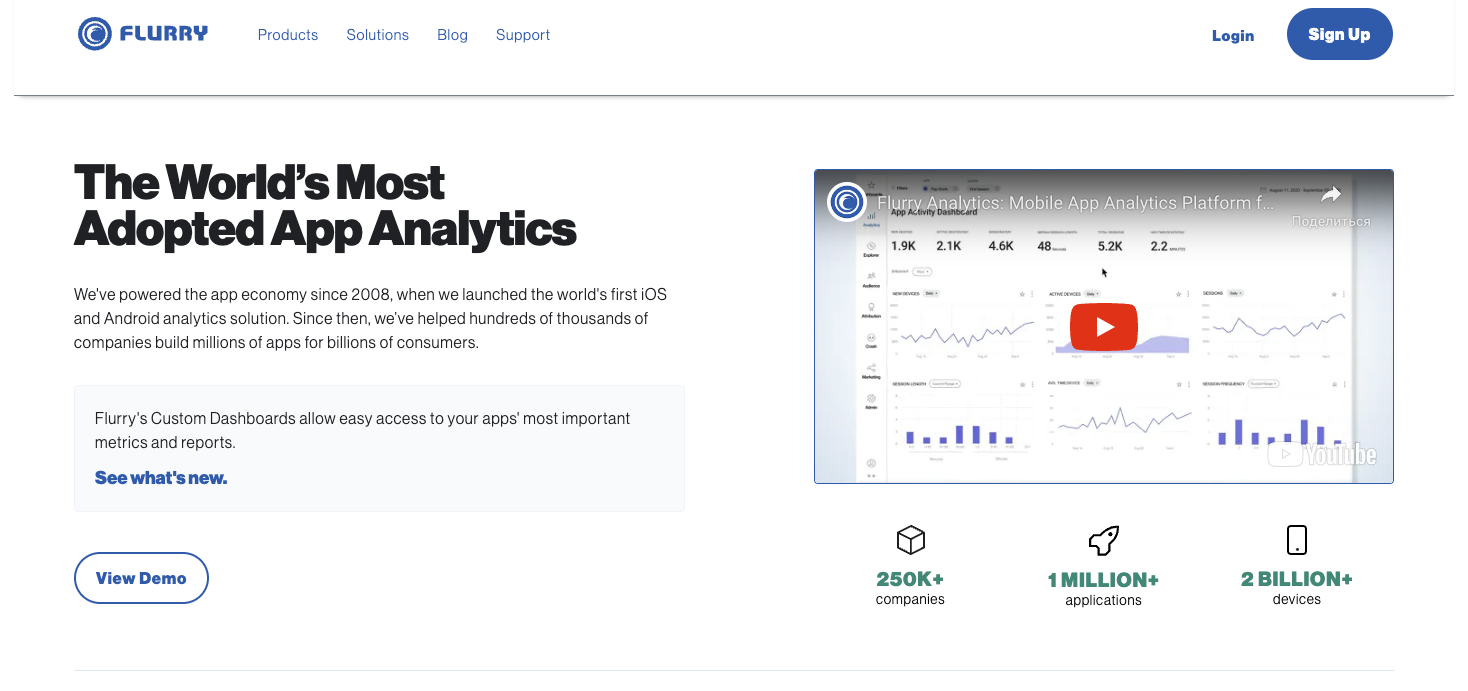
A free tool offering insights into app usage, audience demographics, and user behavior patterns.
Important: Flurry Mobile Analytics, including SDK and Analytics UI, will sunset on March 15, 2024.
Important: Flurry Mobile Analytics, including SDK and Analytics UI, will sunset on March 15, 2024.
UXCam

UXCam is designed for mobile apps and provides session replay and heatmap features to understand user interactions.
Each tool, including UserX at the forefront, brings unique features to the table. The best choice depends on your specific UX data analytics needs and goals. By effectively using these tools, you can gain valuable insights into user interactions, leading to a significantly enhanced user experience for your mobile app.
Incorporating UX analytics into the design process of a mobile app is a key step towards ensuring a user-friendly and effective product. By using analytics in UX design, you can make data-driven decisions that enhance the user experience. Here’s how to integrate UX design and data analytics effectively:
By integrating UX analytics into your design process, you align your design decisions with actual user behavior and needs. This approach ensures that your mobile app is not just aesthetically pleasing but also functionally sound and user-centric.
- Start with Clear Objectives: Before diving into analytics, define what you want to achieve with your design. This could be improving user engagement, increasing conversions, or enhancing navigation.
- Collect Data Regularly: Use UX analytics tools to gather data continuously. This can include user behavior, app performance metrics, and feedback.
- Analyze and Interpret Data: Look at the data to identify patterns and trends. Understand what it tells you about user behavior and preferences.
- Apply Insights to Design: Use these insights to inform your design decisions. This might involve tweaking the user interface, improving app functionality, or simplifying navigation paths.
- Test and Iterate: Implement changes based on your analytics insights, then test these changes with users. Use their feedback to make further improvements.
- Monitor Changes Over Time: After making design changes, continue to monitor analytics to see how they impact user behavior and app performance.
By integrating UX analytics into your design process, you align your design decisions with actual user behavior and needs. This approach ensures that your mobile app is not just aesthetically pleasing but also functionally sound and user-centric.
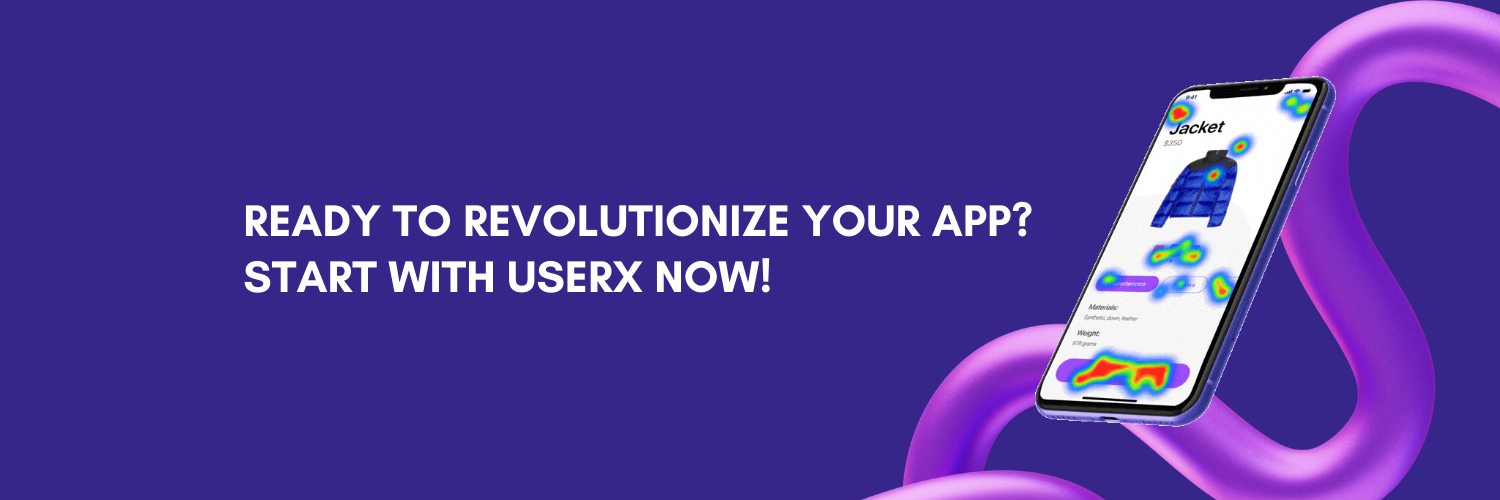
The journey from raw data to impactful design decisions is crucial in the realm of mobile app development. By using UX data analytics, you can make better decisions to improve your app's design. Here's how to effectively use analytics in your design decisions:
By using UX data analytics as a guide for analytics UX design, you ensure that every design decision is backed by solid data. This approach not only enhances the user experience but also aligns your app's design with the actual needs and preferences of your users.
- Gather Comprehensive Data: Start by collecting a wide range of data, including user behavior, interaction patterns, and feedback. This provides a solid foundation for understanding user needs.
- Identify Key Metrics: Focus on metrics that directly impact user experience, such as engagement rates, navigation ease, and conversion rates.
- Analyze User Behavior: Delve into the analytics to understand how users interact with your app. Look for areas where users struggle or disengage.
- Make Informed Design Changes: Use these insights to guide your design updates. This might mean simplifying the user interface, rearranging navigation elements, or adding new features.
- Test and Validate Changes: Implement the changes and then test them with real users. Collect feedback to see if the updates have improved the user experience.
- Iterate and Refine: Based on user feedback and ongoing analytics, continue refining your design. This iterative process ensures that your app evolves in line with user expectations and needs.
By using UX data analytics as a guide for analytics UX design, you ensure that every design decision is backed by solid data. This approach not only enhances the user experience but also aligns your app's design with the actual needs and preferences of your users.
In conclusion, the transformative power of UX data analytics in the mobile app industry cannot be overstated. By leveraging user experience analytics, developers and designers can gain invaluable insights into user behavior, preferences, and pain points. This data-driven approach leads to more intuitive, user-friendly, and successful mobile apps.
In essence, integrating UX data analytics into the development process is not just a trend; it's a fundamental shift in how mobile apps are designed and improved. It empowers developers and designers to create apps that truly resonate with users, ultimately leading to greater success in the mobile app market.
- Enhanced User Understanding: UX analytics provide a deep understanding of how users interact with apps, enabling designers to create more user-centric interfaces.
- Data-Driven Decisions: Instead of relying on guesswork, decisions are based on concrete data, leading to more effective and efficient design choices.
- Continuous Improvement: Regular analysis of UX data allows for ongoing improvements, ensuring that the app remains relevant and engaging for users.
- Competitive Advantage: In a crowded marketplace, apps optimized with UX analytics stand out, offering superior user experiences and driving higher user retention.
- Future Trends: As technology evolves, the role of UX data analytics in shaping mobile apps will only grow, offering new ways to understand and cater to user needs.
In essence, integrating UX data analytics into the development process is not just a trend; it's a fundamental shift in how mobile apps are designed and improved. It empowers developers and designers to create apps that truly resonate with users, ultimately leading to greater success in the mobile app market.
What is UX Analytics in Mobile App Development?
UX analytics in mobile app development involves analyzing how users interact with an app. It uses data to understand user behavior, preferences, and pain points, helping developers improve the app's usability and functionality.
Why is User Experience Data Analytics important for Mobile Apps?
User experience data analytics is crucial because it provides insights into how users engage with an app. This information helps in making informed decisions to enhance the app's design and functionality, leading to a better overall user experience.
How do UI Analytics contribute to Mobile App Development?
UI analytics contribute by tracking user interactions like clicks, swipes, and navigation patterns. This data helps in understanding user behavior, identifying pain points in the app's interface, and making necessary improvements.
What are some key UX Analytics Metrics for Mobile Apps?
Key UX analytics metrics include user engagement (like session length), user retention rates, app performance metrics (such as load times), conversion rates, and user feedback (through surveys and reviews).
What should I look for in UX Analytics Software?
UX analytics in mobile app development involves analyzing how users interact with an app. It uses data to understand user behavior, preferences, and pain points, helping developers improve the app's usability and functionality.
Why is User Experience Data Analytics important for Mobile Apps?
User experience data analytics is crucial because it provides insights into how users engage with an app. This information helps in making informed decisions to enhance the app's design and functionality, leading to a better overall user experience.
How do UI Analytics contribute to Mobile App Development?
UI analytics contribute by tracking user interactions like clicks, swipes, and navigation patterns. This data helps in understanding user behavior, identifying pain points in the app's interface, and making necessary improvements.
What are some key UX Analytics Metrics for Mobile Apps?
Key UX analytics metrics include user engagement (like session length), user retention rates, app performance metrics (such as load times), conversion rates, and user feedback (through surveys and reviews).
What should I look for in UX Analytics Software?
When choosing UX analytics software, look for features like user behavior tracking, heatmaps, session replay, real-time analytics, customizable reports, integration capabilities, user feedback collection, and responsive customer support.
How can UX Data Analysis enhance the design process of a Mobile App?
UX data analysis enhances the design process by providing insights into user behavior and preferences. This data-driven approach enables designers to make informed decisions, leading to more user-friendly and effective app designs.
How can UX Data Analysis enhance the design process of a Mobile App?
UX data analysis enhances the design process by providing insights into user behavior and preferences. This data-driven approach enables designers to make informed decisions, leading to more user-friendly and effective app designs.



